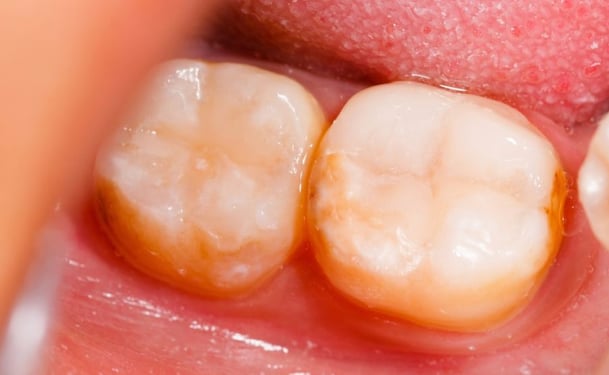In modern dentistry there are three main types of tooth filling materials: amalgam, composite and temporary filling materials. Additionally there are also three major types of indirect filling material such as gold, porcelain and composite.
There has been a lot of controversy over silver fillings (amalgam) because it is made out of metallic mercury which was deemed to be toxic. A wide-spread panic in the early 90s made thousands of Americans contact their dentists in panic in order to have their amalgam fillings removed; sometimes a number of teeth have been extracted to prevent mercury poisoning. But metallic mercury used in amalgam fillings is not really toxic. There is no evidence that the very small amounts mercury that may be released into the mouth from dental fillings presents any danger of mercury poisoning so those claims were never really supported by scientific evidence. In fact whatever mercury does exist in the human body it tends to be excreted harmlessly from it.
Silver amalgam’s main disadvantage is the way it looks. Most silver amalgam fillings tend to be gray or black or silver. Some older forms of amalgam tended to cause a bluish stain to the teeth thus furthering their unpleasant appearance. Lots of dentists will suggest getting a composite filling instead mostly for appearance sake; composite fillings mimic the appearance of the bone and blend in perfectly. However silver amalgam has some advantages since these fillings are really durable, very strong, not likely to break, and last a very long time. Usually five to ten years and sometimes even more than that if a person has good dental habits. Silver amalgam is easier to ”install” than composite fillings so the skill or experience of the dentist is not crucial.
Composite fillings are probably the most desirable in modern dentistry. They are called ”tooth-colored” and are easily distinguished from amalgam, gold and temporary fillings. The most commonly used composite filling is made out of microscopic glass and / or porcelain particles that are embedded in a mass of acrylic. The glass or porcelain particles consist of sixty to eighty percent of the composite filling. It is the glass particles that give the composite filling their color. The acrylic is the plastic matrix that holds the glass particles together in the filling.
Once installed in the tooth composite fillings are cured with light – the acrylic part of the filling is fluid until it’s hardened by the light. The curing also allows the dentist more time to work on the filling itself – reshaping it and making it so that it fits perfectly inside the tooth. The light curing also makes the color much more stable and the tooth doesn’t yellow or lose color as the person ages.
Due to the presence of porcelain particles the composite fillings are very resistant. Silver amalgam fillings are the most durable but most recent advances in particle formulation and shape have made them durable enough to compete with silver amalgam. These fillings last five to ten years on the average.


